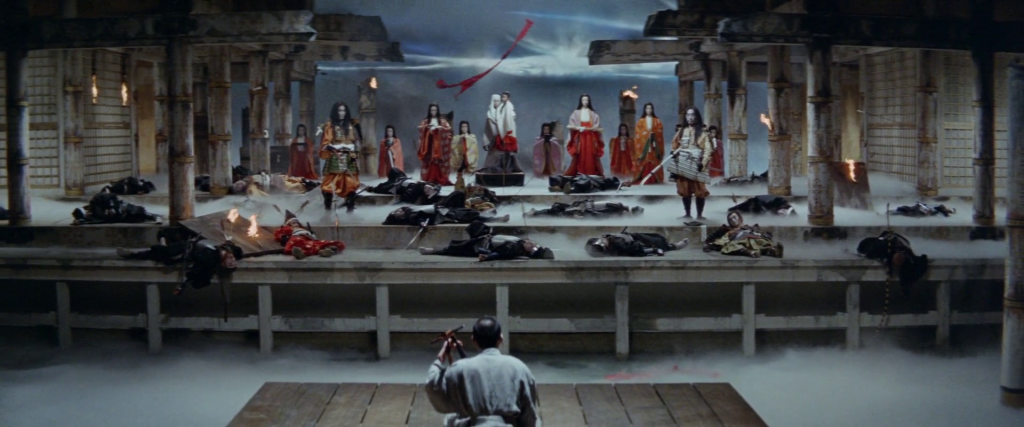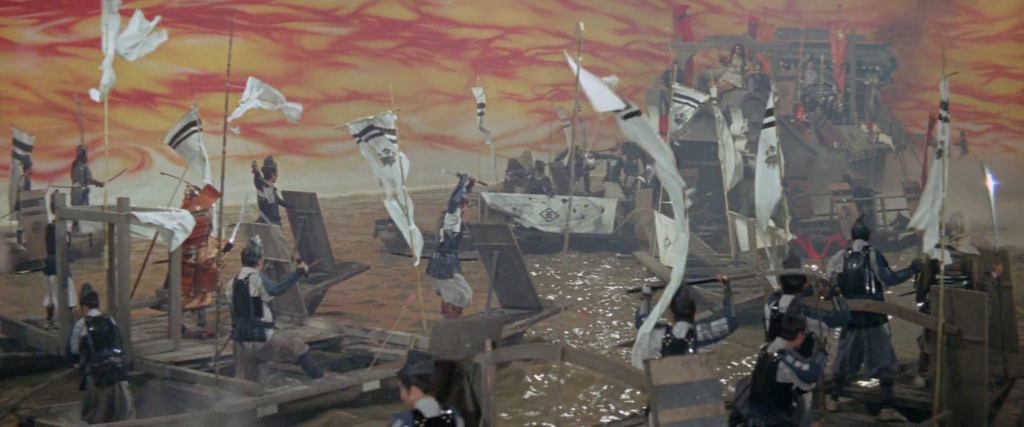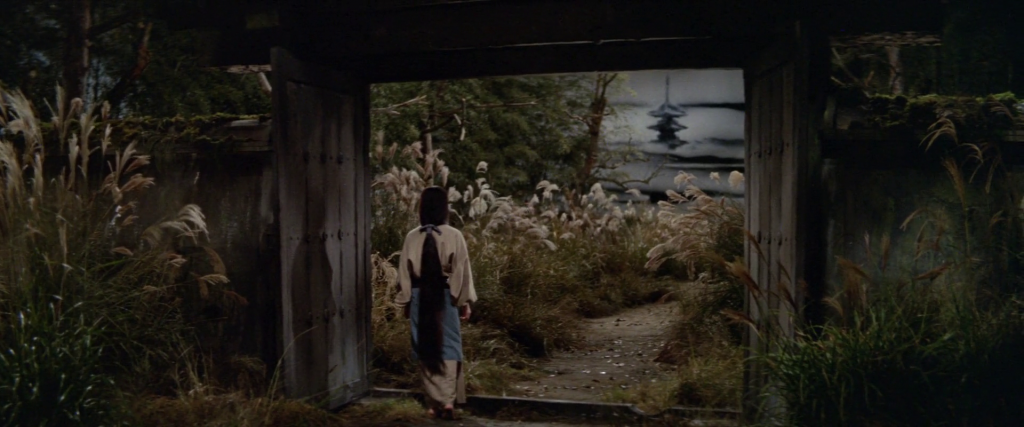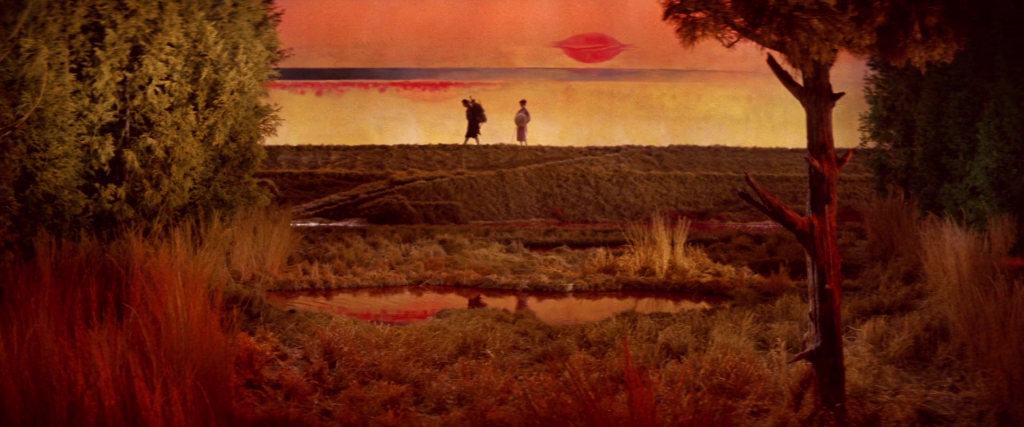Masaki Kobayashi’s Kwaidan (literally translated as “ghost stories”) is an anthology of Japanese folk tales, adapted from various stories collected in the writings of Lafcadio Hearn. The film consists of four of these tales, all of which of course involve ghosts, spirits, or the other-worldly.
The film is a weighty three hours in length, and takes its time in setting an ethereal and chilling mood. The first story, “The Black Hair”, involves a samurai who, tired of his low status, leaves his home and devoted wife and family home to marry into a wealthier household in a different region, before returning home after a number of years in yearning for his old life…
The second story, “The Woman of the Snow”, involves a wood-cutter, Minokichi (Tatsuya Nakadai) and his friend who are caught in a blizzard and take refuge in a hut near a river. A spirit taking the form of a beautiful woman (Keiko Kishi) appears in the night and takes his friend’s life, but takes pity on Minokichi and spares him, citing his youth and good looks. She warns him never to speak of what he as seen, or she will return and kill him. Minokichi survives the storm and returns home, to his every-day life…

The third story, “Hoichi the Earless”, follows Hoichi, a blind monk and skilled musician living at a temple. Playing music one night, he is visited by a ghostly samurai, who leads him to play for the court of his dead master…
The fourth and final story, “In a Cup of Tea”, is the tale of a lord’s attendant who repeatedly sees the face of a stranger in his cup of tea, who then appears to him while he is on guard duty later that night…
You may have noticed those synopses are pretty short, and all end in an ellipsis. Really, I just don’t want to give anything away, you should experience how these stories unfold for yourself!
An Other-worldly Beauty

The production design, sets and colour of Kwaidan are all absurdly gorgeous. It’s clear that this is not striving for realism, it is a reflection of passed-on folk tales and ghost stories, artistically and ethereally reproduced for the screen. This serves to keep the audience at somewhat of a distance from the action, but this works perfectly given the super-natural subject matter. It’s not something you can get close to, it’s deliberately out-of-reach and somewhat immaterial, it can’t quite be fully grasped. It is exquisitely beautiful.
You may be put off by the length. If that is the case I would advise either just biting the bullet and going for it, or watching the stories one by one. In any case, I want to finish with just a few images of the film in all its glory. Even without the benefit of seeing how the camera moves or the strength of the actors’ performances, it’s still plain to see from these images that Kwaidan is a beautiful film, and well worth seeking out.



8/10











